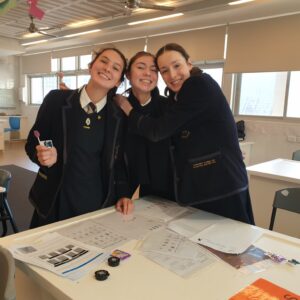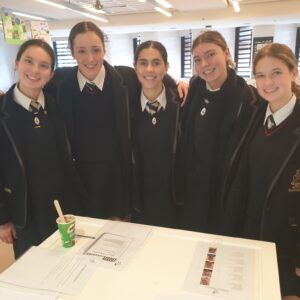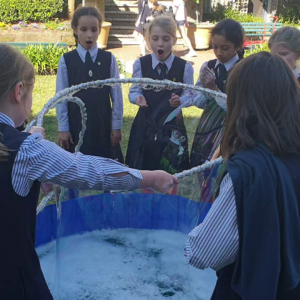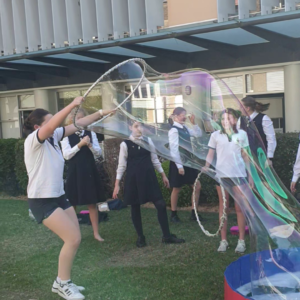
Science Week at SCEGGS
Wow! What a week we had. It was wonderful to see the enthusiasm for Science amongst so many of our students!
Forensics
On Tuesday and Wednesday lunchtimes, students volunteered to help solve the forensics case of “Who Stole Beryl?” (NB – Beryl is Mr Searl’s very elegant dog). Students investigated a number of clues such as footprints, fingerprints, soil pH and type, information from a datalogger, and a series of notes on the whereabouts of various Science Staff Members on the day the crime was committed.
Mr Searl was very thankful for the 75 students who provided forensic assistance in the case. Due to the students’ clever analysis of the clues, it was discovered that Dr Guss had stolen Beryl. However, in his interview, he stated that it was a miscommunication, and he only took Beryl for some experiments into Static Electricity to see if dog hair would stand on-end better than human hair.
The award for the best team name went to:
| Bumbling Beryls | Year 11 |
|
The 3 runners up teams that both correctly identified Dr Guss and provided a sound analysis of the clues were:
| Beryl’s Finders | Year 7 |
|
| Beryl Bonanza | Year 10 |
|
| Capybaras | Year 10 |
|
The winning team with excellent analysis of the evidence was:
| Beryl’s Bandits | Year 11 |
|
Inter-House Science Competition
The annual Inter-House Science Competition was held recently. The Science Leaders and Vice-Leaders MC’d the event beautifully. After an Acknowledgement of Country, teams in the competition started completing a puzzle to match animals with their collective name and the name of their young. Did you know that a platypus’ baby is called a puggle? And a group of platypuses is called a paddle? While the puzzle was completed, audience members completed “heads or tails” questions, such as “How many teeth does an adult human have?” and “What is the study of mushrooms called?”.
After this, teams competed in a round of Science Trivia, followed by the most important, final event – The Science Set-Up. One person at a time from each team needed to collect a piece of science equipment and set up a particular arrangement of equipment (e.g. Bunsen burner, tripod, bosshead and clamp etc). The fastest team to safely set up their equipment won. This resulted in much laughter and excitement, and the Year 7 students are particularly commended for putting their newly learnt science skills to the test.
Congratulations to Docker (1st Place), Christian (2nd Place) and Beck (3rd Place).
Giant Bubble Experiment
As our final celebration of Science Week, students made hypotheses as to the longest bubble that could be created. Students practiced pulling bubbles from a giant paddling pool and managed to create a 7 metre long bubble. Congratulations to Olivia Phillips (Year 8) for creating the longest bubble, and to Gemma Munro (Year 8) for creating the best Human inside a Bubble.
Lastly, a big thank you to the Science Leaders, Vice-Science Leaders and all the Science Department for their help in preparing and conducting such wonderful experiences for our students. It is hoped that such memorable experiences will inspire our students to even greater enjoyment of Science at SCEGGS.
The Science Department
































